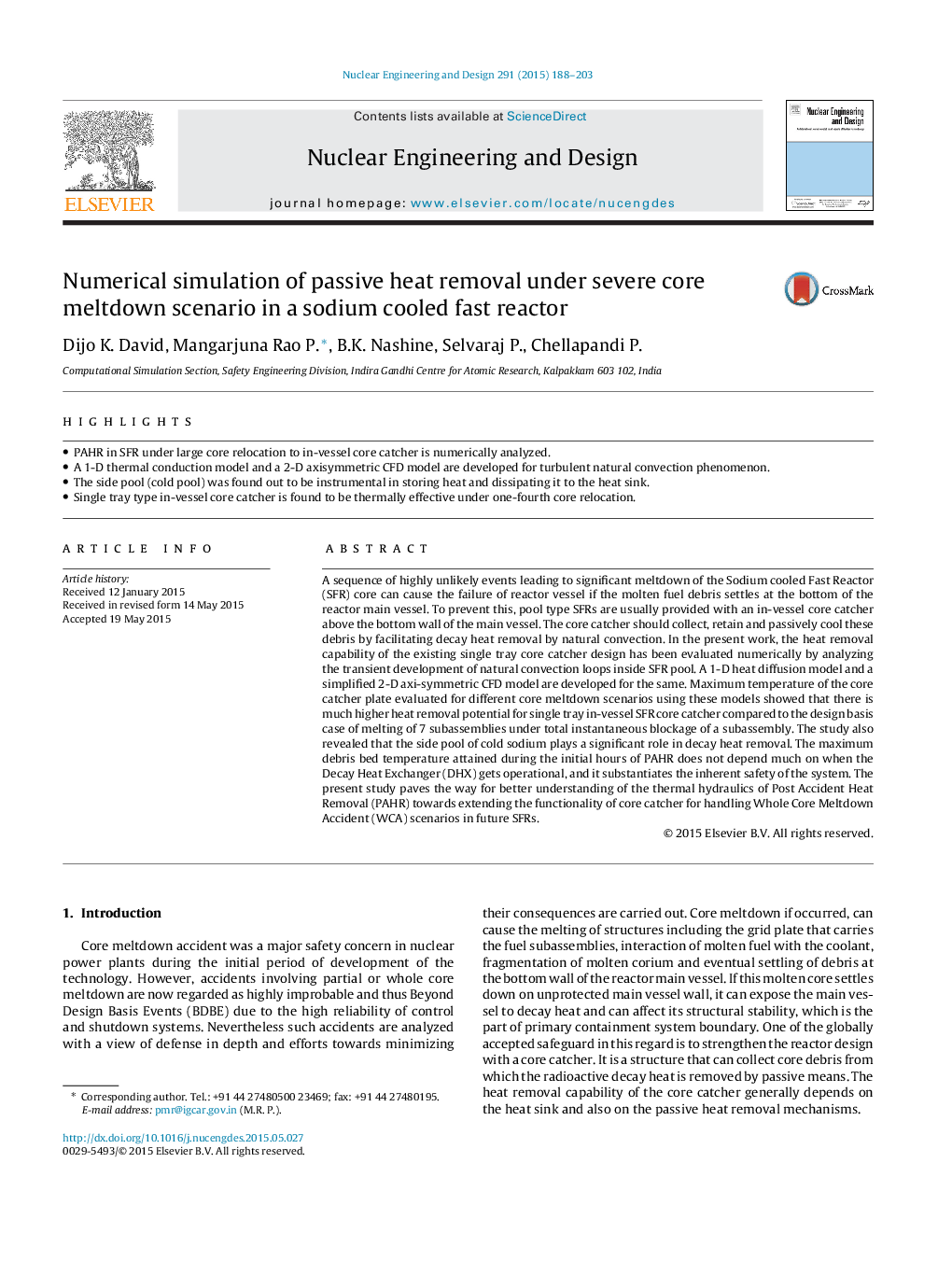| کد مقاله | کد نشریه | سال انتشار | مقاله انگلیسی | نسخه تمام متن |
|---|---|---|---|---|
| 296101 | 511708 | 2015 | 16 صفحه PDF | دانلود رایگان |
• PAHR in SFR under large core relocation to in-vessel core catcher is numerically analyzed.
• A 1-D thermal conduction model and a 2-D axisymmetric CFD model are developed for turbulent natural convection phenomenon.
• The side pool (cold pool) was found out to be instrumental in storing heat and dissipating it to the heat sink.
• Single tray type in-vessel core catcher is found to be thermally effective under one-fourth core relocation.
A sequence of highly unlikely events leading to significant meltdown of the Sodium cooled Fast Reactor (SFR) core can cause the failure of reactor vessel if the molten fuel debris settles at the bottom of the reactor main vessel. To prevent this, pool type SFRs are usually provided with an in-vessel core catcher above the bottom wall of the main vessel. The core catcher should collect, retain and passively cool these debris by facilitating decay heat removal by natural convection. In the present work, the heat removal capability of the existing single tray core catcher design has been evaluated numerically by analyzing the transient development of natural convection loops inside SFR pool. A 1-D heat diffusion model and a simplified 2-D axi-symmetric CFD model are developed for the same. Maximum temperature of the core catcher plate evaluated for different core meltdown scenarios using these models showed that there is much higher heat removal potential for single tray in-vessel SFR core catcher compared to the design basis case of melting of 7 subassemblies under total instantaneous blockage of a subassembly. The study also revealed that the side pool of cold sodium plays a significant role in decay heat removal. The maximum debris bed temperature attained during the initial hours of PAHR does not depend much on when the Decay Heat Exchanger (DHX) gets operational, and it substantiates the inherent safety of the system. The present study paves the way for better understanding of the thermal hydraulics of Post Accident Heat Removal (PAHR) towards extending the functionality of core catcher for handling Whole Core Meltdown Accident (WCA) scenarios in future SFRs.
Journal: Nuclear Engineering and Design - Volume 291, September 2015, Pages 188–203
